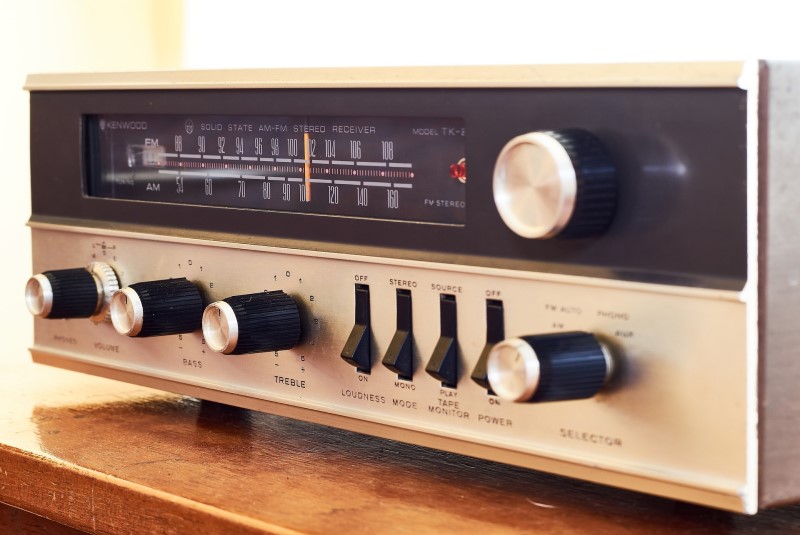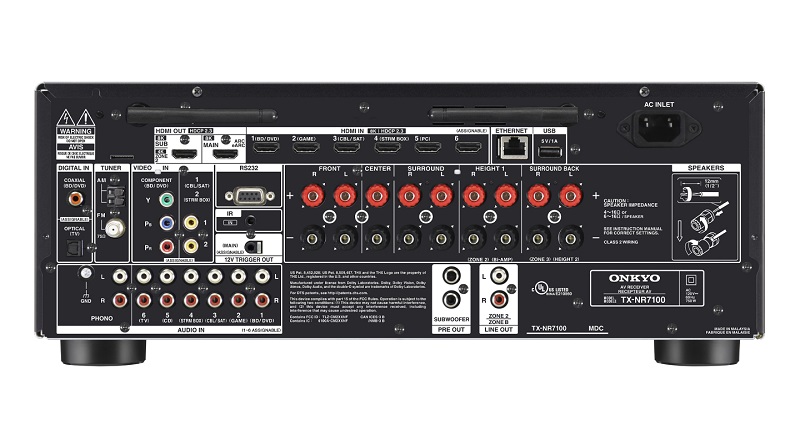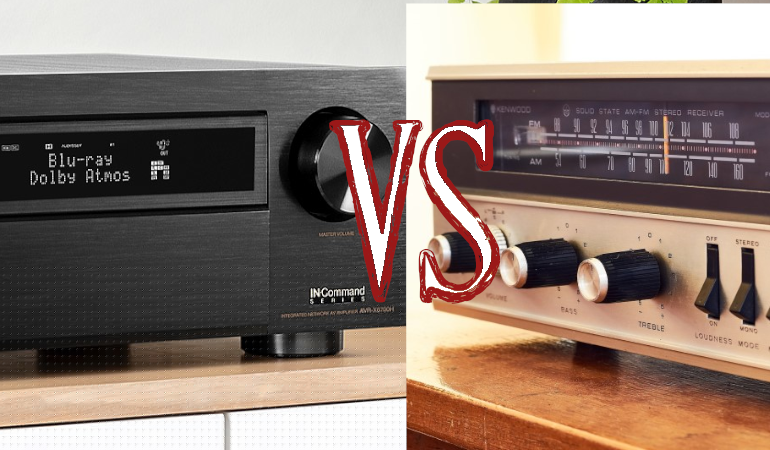Do I Need a Stereo Receiver for Stereo Music?
Audiophiles are a funny group. In my experience, they focus heavily on gear and less on the music. They often make subjective claims about how cables or other upgrades have entirely changed the sound of their system. And when it comes to powering their speakers, they will often recommend only a stereo receiver or separate mono amplifiers, claiming that those amplifiers are the purest way to reproduce your music. But are their claims valid? Let’s discuss.
What Is a Stereo Reciever?
In the broadest sense, a stereo receiver is an audio amplifier and a switching device for sources connected to that receiver. It will have at least one output for speakers and will generally only have two channels of amplification (hence the term stereo). To be called a receiver, they must have an AM/FM tuner. They may also have other streaming services built-in. If they don’t have an AM/FM tuner, they would be called an Integrated Amp. In my experience, most have rudimentary bass management or tone controls. Some will also have video switching functions. Some will not.

What is an AV Reciever?
An AV receiver is a multi-channel amplifier and a switching device for audio and video signals. It will have multiple outputs for speakers and multiple channels of amplification based on the number of channels driven. Modern AV receivers have a variety of streaming services, Bluetooth, and other wireless connections built-in. Of course, they can decode multi-channel surround sound codecs for movies, tv shows, and video games. They generally have some form of room correction and bass management. Oh, and did I mention they have a stereo mode? Spoiler alert! That will factor in later.
So Why Do They Claim A Stereo Amplifier Is Better?
Audiophiles will claim (subjectively) that a stereo amplifier delivers very linear power to your speakers, thus powering your speakers better and creating a cleaner signal. They will claim that because an AV receiver powers multiple channels of amplification simultaneously, the power is not linear and, therefore, cannot correctly drive your speakers.
There is “some” merit to this argument. For example, when you look at the power ratings for a stereo receiver, it will often claim 100 watts per channel with two channels driven, meaning it delivers 100 watts per channel, all the time.

But when you look at an AV receiver, it will claim 100 watts per channel, leading you to believe that it will drive all channels each at 100 watts. But once you dig into the fine print, it’s 100 watts into two channels driven. So, when watching a movie, it divides power amongst the amplifiers and never delivers the total wattage it promised. But guess what? It powers down the amps not in use when it’s in stereo mode and becomes a stereo amplifier.
Lastly, there is a concern from the audiophile that any feature of an AV receiver that isn’t being used for audio can somehow create noise during playback. In fairness, there have been instances where this has been an issue. Very specific instances. These were quickly corrected in later receiver releases. In fact, some modern receivers have the ability to turn off all the internal functions of an AV receiver except for the DACs and amps if you want. We wouldn’t recommend using those listening modes as they also shut off your room correction and bass management. But they exist.
So A Stereo Reciever Is Better?
No! So here is what you need to understand. Speakers draw power from an amplifier as needed. Just because your amplifier can push out 100 watts, it doesn’t automatically send that to the speaker at all times. Factors like speaker sensitivity, seated distance from the speaker, and volume all factor into how much power your speaker needs to draw from the amplifier. I sit eight feet away from my 91dB sensitive speakers. Do you know how much power I need to get to reference volume from that distance? Three watts!
So for most people, with most speakers, in most rooms, having 100 watts on tap continually won’t matter a bit to you. Even with peaks for music, your AV or stereo receiver won’t draw close to that. So you would never have to worry about not having enough power for your speakers.
On top of that, audiophiles will talk about their audiophile gear’s signal-to-noise ratio or total harmonic distortion. Guess what? Most AV receivers meet or exceed those specs easily.
So An AV Reciever Is Better?
In my opinion, yes. An AV receiver will have adequate power for virtually all speakers in most rooms. Onboard bass management and room correction mean that you will have access to lots of filters and EQ’s to help compensate for less than ideal rooms or placement. You can even play with the target curves to dial it to your preferences.
And usually, you are getting more for less! For example, an entry-level AV receiver will provide configurations from 2.1 stereo to 5.1 surround (at least), with audio and video switching, bass management, basic room correction, and built-in streaming services. In addition, more expensive AV receivers will have more channels of amplification and better room correction!
But My Old Stereo Receiver Sounded Better
We often hear that from people who upgrade to new equipment. The thing that we will usually ask is, what else did you change? Did you change your speakers? Your placement? Did you add acoustic treatments? Did you add new furniture? All of these things can play a factor in how your system sounds.
In fairness, your old stereo receiver might have sounded better with your music. It certainly is possible. But it isn’t because the stereo receiver was somehow better or more accurate. Most likely, the old equipment was non-linear. That non-linearity was something that you found pleasing (or, more likely, a sound that you were used to). Can you recreate that old sound with the new receiver? Absolutely! But you need to know what was changed and how it impacted your system. Often, the only way to do that is with a measurement microphone and Room EQ Wizard. Take some measurements with your old stereo receiver, create a target curve in your room correction program in your new AV receiver, and enjoy your music again. It will sound the same.
Our Take
I’ve said it before, but I will repeat it – the only role of a receiver is to amplify the signal from your source to your speakers. It should not add anything or alter the sound, and if it does, there is something wrong with it. The claim that a good stereo receiver is better than a good AV receiver is false, and there is no objective data to suggest otherwise. On the other hand, whereas a stereo receiver is a one-trick pony, the AV receiver is the jack of all trades, able to do many things well.
And I will put my money where my mouth is. I have owned all manner of “audiophile gear” over the years, and I have sold it all. My 5.2.4 home theater and 2.1 systems are one and the same. Do you know what made the most change in my system? I treated my room with acoustic panels, not adding a new receiver.



The only true audible benefit an older AM/FM Stereo Receivers have over modern AVR’s is that say pre 1990 they tended to will have a better FM/FM Stereo tuner performance. By the mid/late 90’s most stereo receivers or AVR’s had simple and cheap digital AM/FM/FM Stereo tuner cards plugged into the circuit boards and FM tuner performance became a secondary thing.
Back in the 1970’s and 1980’s people listened to a lot of FM and FM Stereo, likely more than today and even lower cost receivers tended to have good or better AM, FM/ FM Stereo performance. The higher end ones had outstanding FM /FM Stereo performance.
Very good point! Thanks for sharing.
I like that you’re attempting to dispel some of the snake-oil of the audiophile industry. My contribution to this is cables. Many cables tout an array of gold-plated, oxygen free, etc attributes; yet most of cable selection is really more about your speakers and selecting the proper length run and gauge. Even then the effect is minimal as long as the cable is pure copper you can pretty much expect similar performance. Funny how using old lamp power cords will regularly give you “audiophile” quality audio.
As Andrew touched on, your old stereo did sound better, but it was likely you, not the equipment. Psychologically speaking humans are comforted more by things we are accustomed to, more than new things which pose mental challenges. It’s one reason why abused people may repeatedly seek out partners likely to abuse them (socio-economics being the big key factor).
That said, there is some truth to older equipment sounding “better”, but it’s not for the reasons you’d expect. Newer equipment has newer capacitors that function closer to specifications. These newer capacitors produce a more accurate sound than old capacitors that have aged and fallen outside specifications. Capacitors that are out of spec are known to produce that signature “warm” tone of older equipment, which turns out people like better in many cases (although audiophiles like to gloss over this fact because it means accurate reproduction is not what makes equipment the best). Researchers speculate people like this warm tone better because it’s closer to the unnoticed imperfections of human voice in conversation. Ultimately it’s still up for debate, but don’t buy into the ultra-wealthy justifying their unnecessary spending habits as special audiophillia.